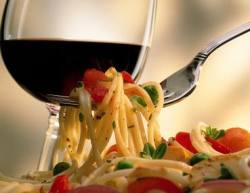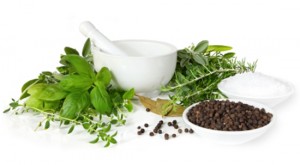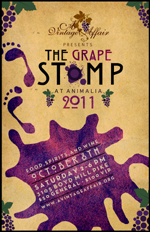by Lorri | Oct 26, 2011 | UnCorked
 I think we all assume pasta and wine are a straightforward pairing. Pick an Italian wine and the match should work. Over the past few weeks I have experimented with different pasta and wine combinations. It was arduous work but somebody had to do it.
I think we all assume pasta and wine are a straightforward pairing. Pick an Italian wine and the match should work. Over the past few weeks I have experimented with different pasta and wine combinations. It was arduous work but somebody had to do it.
The experiments reinforced one basic rule: It doesn’t matter if the pasta is long, short, a tube or spiral … it’s the sauce and filling that counts.
Pasta served with meatballs and meat-based sauces such as bolognese pair best with reds such as zinfandel, sangiovese, merlot, shiraz, syrah.
THE VALUE
- 2009 Cline Cellars Sonoma County Syrah, California (about $12 retail)
THE SPLURGE
- 2008 Ridge Vineyards Ponza Zinfandel, California (about $30 retail)
Dishes such as spinach lasagna, ricotta-stuffed manicotti or stuffed mushrooms partner well with chardonnay, Soave, pinot noir.
THE VALUE
- 2010 Mark West Central Coast Pinot Noir, California (about $12 retail)
THE SPLURGE
- 2009 Rex Hill Willamette Valley Pinot Noir, Oregon (about $25 retail)
When it comes to seafood pasta dishes, whether crab, mussels, shrimp or lobster, white wine such as chardonnay, sauvignon blanc, albarino or pinot grigio is the way to go.
THE VALUE
- 2010 La Cana Albarino, Spain (about $17 retail)
THE SPLURGE
- 2010 Keenan Napa Valley Chardonnay, California (about $25 retail)
For creamy sauces, safe bets include chardonnay or Soave.
THE VALUE
- 2011 Kendall Jackson Avant Chardonnay, California (about $13 retail)
THE SPLURGE
- 2010 Cakebread Cellars Napa Valley Chardonnay, California (about $31 retail)
Pinot grigio, Orvieto, sauvignon blanc and albarino are good options for cold pasta salads.
THE VALUE
- 2011 Ruffino Orvieto, Italy (about $10 retail)
THE SPLURGE
- 2011 A to Z Pinot Gris, Oregon (about $17 retail)
Pesto can vary from the familiar blend of basil and pine nuts to more unusual combinations like sun-dried tomato or roasted red peppers and walnuts. Consider sangiovese, merlot or chardonnay for complementary wines.
THE VALUE
- 2010 Michel Lynch Merlot, France (about $12 retail)
THE SPLURGE
- 2008 Bell Vineyards Yountville Merlot, California (about $34 retail)
by Lorri | Oct 19, 2011 | UnCorked
 Buttery, tannic, structured, oaky — for the uninitiated, wine lingo can be confusing. It’s almost like listening to a foreign language, where many of the words sound the same, but have different meanings.
Buttery, tannic, structured, oaky — for the uninitiated, wine lingo can be confusing. It’s almost like listening to a foreign language, where many of the words sound the same, but have different meanings.
These words are not meant to be confusing, but an attempt at establishing a language for describing wine. The terms, while not official, are common descriptors used to discuss the vast array of wine styles.
Many of these terms appear regularly in Uncorked, but a couple may be new to some readers.
Crisp: This term is used to describe a wine having a high amount of acidity. It’s the same sharp, puckery sensation of biting into a Granny Smith apple.
Flabby: The opposite of crisp, this refers to a wine with too little acidity. It is usually caused by either picking grapes too late or their exposure to excessive heat during ripening. Both factors allow the grape acids to decompose. The wine will have a flat, uninteresting taste.
Finish: A wine’s finish is a term for the after taste. Young, simple wines will generally have a “short” finish and more complex wines will leave you tasting flavors long after your initial sip.
Big: If a wine is high in alcohol it is described as being big and full-bodied.
Well-balanced: A wine is well-balanced when its alcohol strength, acidity, sugar and tannin complement each other so no single element is obtrusive or overpowering.
Green: This term is used when a wine is made from grapes not reaching full ripeness. The wine will taste tart and sometimes have harsh flavors and textures.
Hard/harsh: A wine with too much tannin and not enough fruit.
Closed: When opening youthful wines intended for aging, the aromas and taste are sometimes almost void. This void or “closed” state is not considered a fault, rather a stage in a wine’s aging process. Many times aerating the wine brings out the aromas.
Hot: This is used to describe a wine too high in alcohol. It causes a prickly or burning sensation on your palate. It’s common in fortified wines but makes most dry table wines fall out of balance.
by Lorri | Oct 12, 2011 | UnCorked
 The best way to learn about wine is to taste it. Scouring through magazines and books will get you started, but until you pull the cork and taste the wine, the learning experience is lacking. Even the most modest of retail stores carry numerous offerings, many from unfamiliar grapes and growing regions.
The best way to learn about wine is to taste it. Scouring through magazines and books will get you started, but until you pull the cork and taste the wine, the learning experience is lacking. Even the most modest of retail stores carry numerous offerings, many from unfamiliar grapes and growing regions.
One way to improve your buying and tasting skills is to get to know a couple of key grapes.
SAUVIGNON BLANC
Acidity: When it comes to learning about acidity in wine, there’s no need to go further than the crisp, direct-in-your-face freshness sauvignon blanc offers. To understand the taste of acidity on your palate, bite into a Granny Smith apple and experience the sourness that causes a quick burst of saliva down the inside of your gums. Acidity is key in a wine’s refreshing makeup.
New Zealand’s Marlborough region, located on the South Island, is the most celebrated for its distinct green apple, vibrant, high-acid style. California and Australia also produce this grape, but those don’t have as keen a flavor as the searing acidity and grassy style of New Zealand grapes. California and Australia styles tend to be much riper, sometimes adding a bit of other grapes such as semillon, giving it less punch from sauvignon blanc’s typical green crisp style.
THE VALUE
- 2010 Rosemount Estate Sauvignon Blanc, Australia (about $10, retail)
THE SPLURGE
- 2010 Kim Crawford Sauvignon Blanc, Marlborough New Zealand (about $18, retail)
CABERNET SAUVIGNON
Tannin: Just as acidity gives a wine its youthful freshness, tannin acts as a sort of preservative to prolong great wines for aging. It creates a drying sensation on the inside of the gums, much like that produced by cold tea. Tannin is developed from the grape skins, stems or pips (bitter seeds of the grape) or by aging in wood. The thicker the skin of the grape — such as cabernet sauvignon, syrah or nebbiolo — the higher the tannin content.
The key to tannin is the skill of the winemaker in balancing the flavor for wines that are consumed soon after bottling and that of wines to be cellared for many years.
THE VALUE
- 2009 Estancia Paso Robles Cabernet Sauvignon Blanc, California (about $17 retail)
THE SPLURGE
- 2008 Franciscan Vineyards Oakville Estate Cabernet Sauvignon, California (about $30, retail)
by Lorri | Oct 5, 2011 | UnCorked
 Recently, a friend asked if wine could be paired with herbs. An interesting thought because, generally, pairings are much more broad. But as she continued it made perfect sense because she creates dishes based on the fresh herbs available, whether homegrown or those she finds in the supermarket.
Recently, a friend asked if wine could be paired with herbs. An interesting thought because, generally, pairings are much more broad. But as she continued it made perfect sense because she creates dishes based on the fresh herbs available, whether homegrown or those she finds in the supermarket.
So with this question in mind, I sought to find a few compatible herb and wine pairings.
BASIL
Basil is an integral part of most Mediterranean cuisines, especially French and Italian, and it’s easy to match with white and red wines.
Best matches: Soave, chardonnay, sauvignon blanc, sangiovese or French syrah.
SAFFRON
Saffron (technically a spice), often appears in Spanish cuisine and contemporary fish dishes. Saffron goes well with aromatic white wines. Best matches: Albarino and viognier.
CILANTRO
If you are using cilantro in a recipe, chances are there is a lime, garlic clove and chile pepper involved. Best matches: Sauvignon blanc and chardonnay.
LEMONGRASS
Lemongrass is common to southeast Asian cuisine and frequently appears in Thaistyle dishes. It imparts a delicate lemon flavor. Best matches: Riesling and sauvignon blanc.
DILL
Dill’s strong flavor needs a wine capable of competing with its power. Best matches: Sauvignon blanc and chardonnay.
MINT
Mint is widely used in Greek and Middle Eastern cooking, where it matches well with white wines, offering a subtle lemony zest. Best match: Vinho Verde.
ROSEMARY
Rosemary has one of the easier flavors to match with wines with a distinct earthy herb taste. Best matches: Chianti, pinot noir, sangiovese and syrah.
THE VALUE
- 2011 Pacific Rim Columbia Valley Riesling, Washington (about $13 retail)
THE SPLURGE
- 2011 Honig Sauvignon Blanc, California (about $17 retail)
by Lorri | Oct 3, 2011 | UnCorked
 “The Grape Stomp at Animalia” is just around the corner October 16, 2011, benefitting the charities of A Vintage Affair. This Franklin, Tennessee event just outside of Nashville is an event any guest will not forget.
“The Grape Stomp at Animalia” is just around the corner October 16, 2011, benefitting the charities of A Vintage Affair. This Franklin, Tennessee event just outside of Nashville is an event any guest will not forget.
If you can visualize the fun and excitement of the “I Love Lucy” stomping episode… you are already having fun. This event has thirty teams of five people stomping grapes through a series of heats, all competing for the grand finale, prizes and bragging rights of course.
A Vintage Affair is importing grapes from a favored vintner, Robledo Family Vineyards of Sonoma, California. In the preliminary heats, stompers will use 25 pounds of Robledo grapes for a total period of four minutes; but in the finale, the barrel is filled with 30 pounds of grapes to be stomped for five minutes with the addition of a “celebrity” teammate chosen at random from participants.
Teams registered so far include the cleverly named “Stomp Me, Crush Me, Make me Wine,” and “The Grape-ful Dead.” With fun team spirit and for the on lookers; creative events including premium tastings and gourmet foods throughout the day, this is an event to put on your calendar.
Visit The Grape Stomp at Animalia for more information. Enjoy!
by Lorri | Sep 29, 2011 | UnCorked
 We all love a wine festival … especially when it’s in our own backyard. Arkansas winery Wiederkehr Wine Cellars is preparing for its 48th annual Wiederkehr Village Weinfest on Oct. 8 near Altus.
We all love a wine festival … especially when it’s in our own backyard. Arkansas winery Wiederkehr Wine Cellars is preparing for its 48th annual Wiederkehr Village Weinfest on Oct. 8 near Altus.
In years past, as many as 3,500 people have attended the free festival, which features wine tastings, arts and crafts displays, carriage rides through the vineyards, a championship grape stomp, a buffet banquet, a conga line through the wine cellars, singalongs in German and English, entertainment, contests and door prizes.
The long-running festival correlates to the long history of the Wiederkehr family in Altus. In 1880, Johann Andreas Wiederkehr and his family emigrated from Switzerland. The family chose St. Mary’s Mountain near Altus as the location of their home because the area’s mountains, valleys and ridges were similar to the grape-growing climates in Europe’s wine regions. The first task was carving a large cellar into the hillside. This unique cellar is now listed on the National Register of Historic Places and is home to the Weinkeller Restaurant, serving an array of Swiss and European foods but famous for its spaghetti and Back Hendel Vienna (a chicken dish).
The winery focuses on indigenous grape varieties quite rare in most of the United States. Many of the varieties are unfamiliar to wine drinkers simply because they are unique to the Boston and Ozark mountains. Cynthiana, Verdelet and Niagara are just a few in their portfolio of white, red, sparkling and sweet wines.
So, if you’re looking to taste the local wines of Arkansas and have a fun family day in the meantime, the festival is the place to be. There are no tickets or reservations needed, but the evening banquet is first come, first served, so it’s best to get there early. For more information, call (800) 622-9463 or visit WiederkehrWines.com.
 I think we all assume pasta and wine are a straightforward pairing. Pick an Italian wine and the match should work. Over the past few weeks I have experimented with different pasta and wine combinations. It was arduous work but somebody had to do it.
I think we all assume pasta and wine are a straightforward pairing. Pick an Italian wine and the match should work. Over the past few weeks I have experimented with different pasta and wine combinations. It was arduous work but somebody had to do it. Buttery, tannic, structured, oaky — for the uninitiated, wine lingo can be confusing. It’s almost like listening to a foreign language, where many of the words sound the same, but have different meanings.
Buttery, tannic, structured, oaky — for the uninitiated, wine lingo can be confusing. It’s almost like listening to a foreign language, where many of the words sound the same, but have different meanings.
 Recently, a friend asked if wine could be paired with herbs. An interesting thought because, generally, pairings are much more broad. But as she continued it made perfect sense because she creates dishes based on the fresh herbs available, whether homegrown or those she finds in the supermarket.
Recently, a friend asked if wine could be paired with herbs. An interesting thought because, generally, pairings are much more broad. But as she continued it made perfect sense because she creates dishes based on the fresh herbs available, whether homegrown or those she finds in the supermarket. “The Grape Stomp at Animalia” is just around the corner October 16, 2011, benefitting the charities of A Vintage Affair. This Franklin, Tennessee event just outside of Nashville is an event any guest will not forget.
“The Grape Stomp at Animalia” is just around the corner October 16, 2011, benefitting the charities of A Vintage Affair. This Franklin, Tennessee event just outside of Nashville is an event any guest will not forget. We all love a wine festival … especially when it’s in our own backyard. Arkansas winery Wiederkehr Wine Cellars is preparing for its 48th annual Wiederkehr Village Weinfest on Oct. 8 near Altus.
We all love a wine festival … especially when it’s in our own backyard. Arkansas winery Wiederkehr Wine Cellars is preparing for its 48th annual Wiederkehr Village Weinfest on Oct. 8 near Altus.